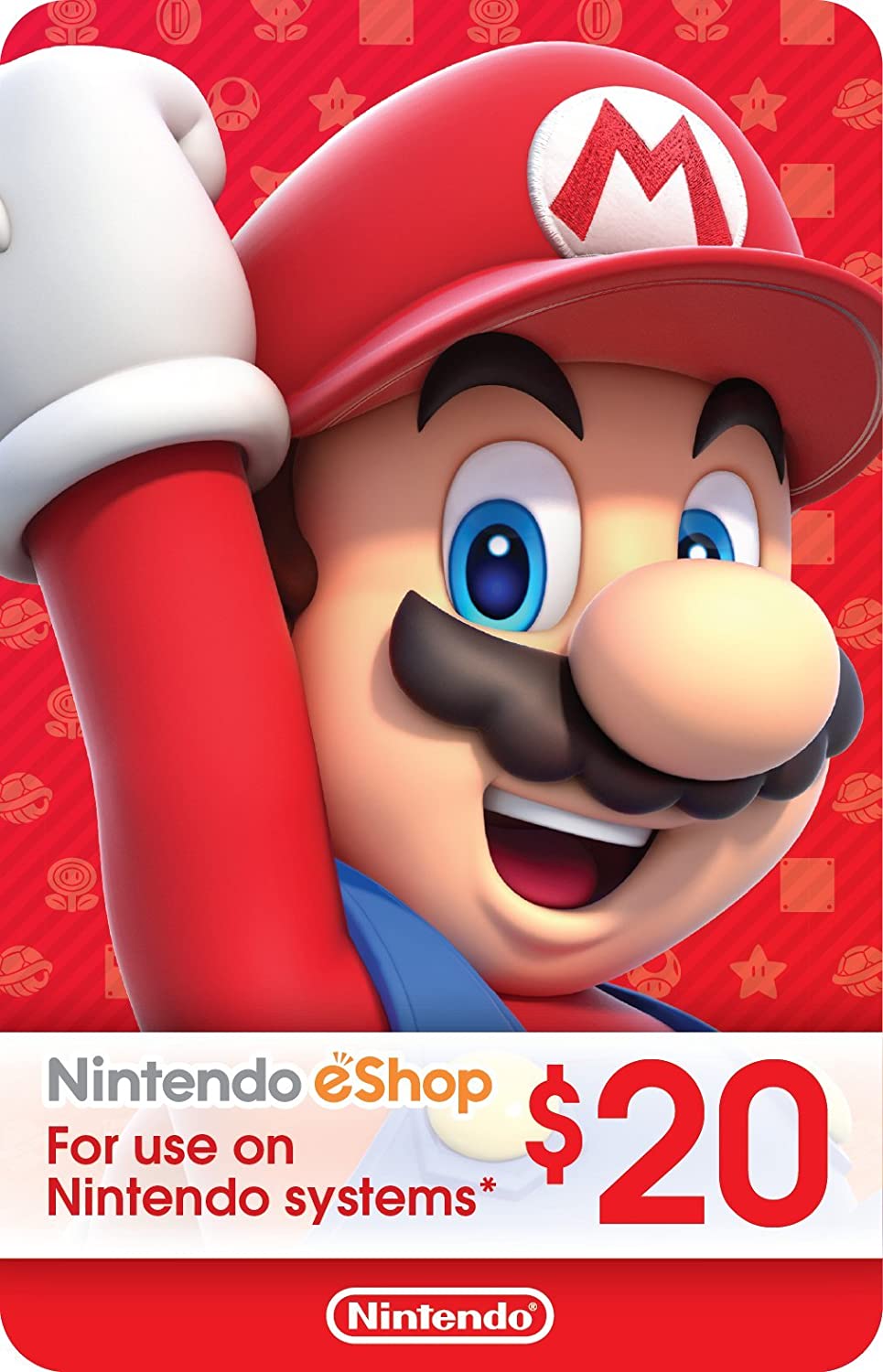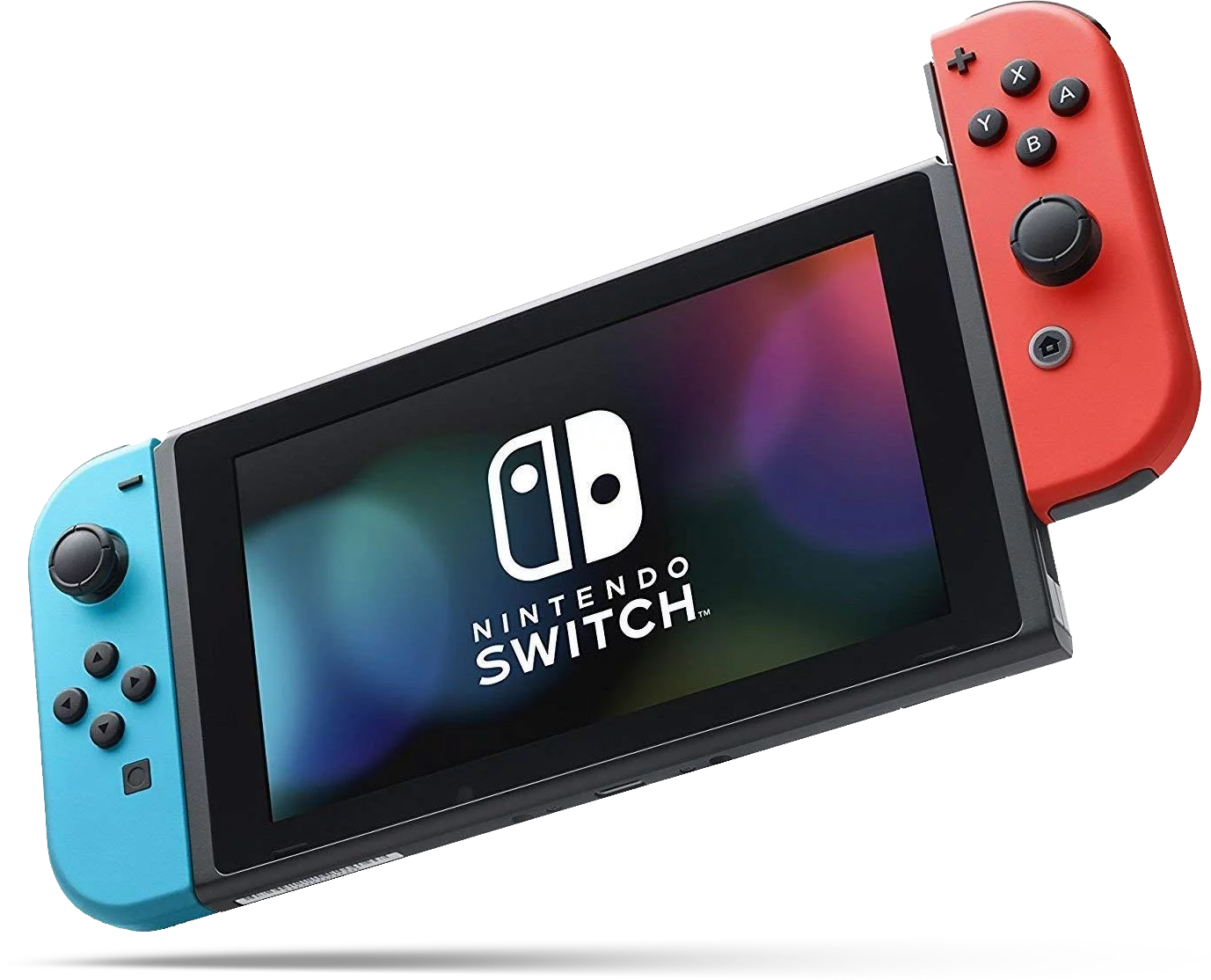Project Triangle Strategy demo for Nintendo Switch hands-on: Unique battles and choices have us hooked
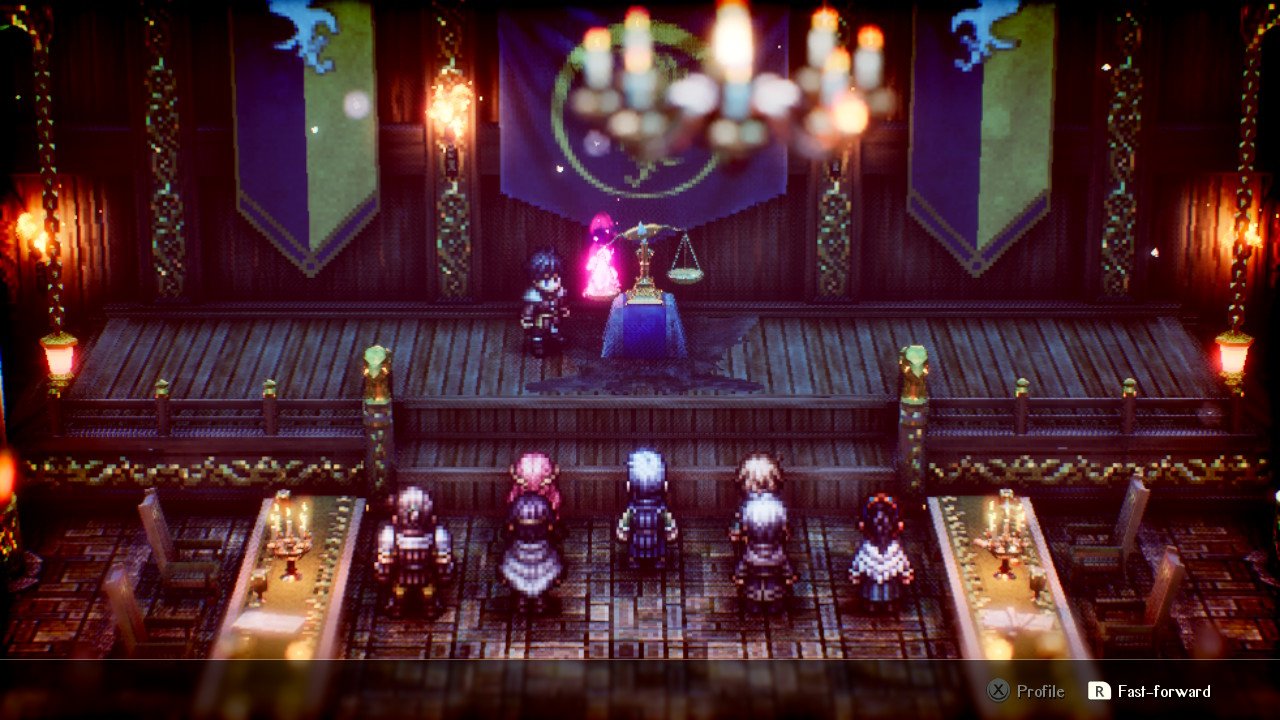
During the February 2021 Nintendo Direct, Square Enix showed up with a brand-new tactical RPG: Project Triangle Strategy. While this is a working title, we actually have a little more than a few screenshots and a tentative name. If you have a Nintendo Switch, you can test this game out for yourself with a free demo! Though it is still a work in progress. After giving the demo a shot, this game is very promising for fans of the genre.
What is Project Triangle Strategy?
Project Triangle Strategy is a new, 2D tactical RPG from Square Enix and the teams behind Bravely Default and Octopath Traveler about a world on the brink of war. The Continent of Norzelia is made of three parts: Aesfrost, Glenbrook, and Hyzante. While the three neighboring kingdoms recently came together in peace, a power shift sends the whole of Norzelia into war. Players take on the role of Serenoa, the young lord of the highest house in Glenbrook.
As war ravages, Of course, there is plenty of plotting, political intrigue, and tough choices to make as you shape the future of the world.
It feels similar to classic 2D strategy games, like Final Fantasy Tactics, but with a few refreshing additions to combat and storytelling. In addition to new battle elements, the game offers the player choices that can affect the story's outcome through the Scales of Conviction. Players must make decisions using the Scales and their three principles: Utility, Morality, and Liberty. You literally weigh your options and must work to persuade your teammates to side with you. Your choices can determine which party members you can recruit, how your people regard you, and even the outcome of your journey.
What does Project Triangle Strategy's demo offer?
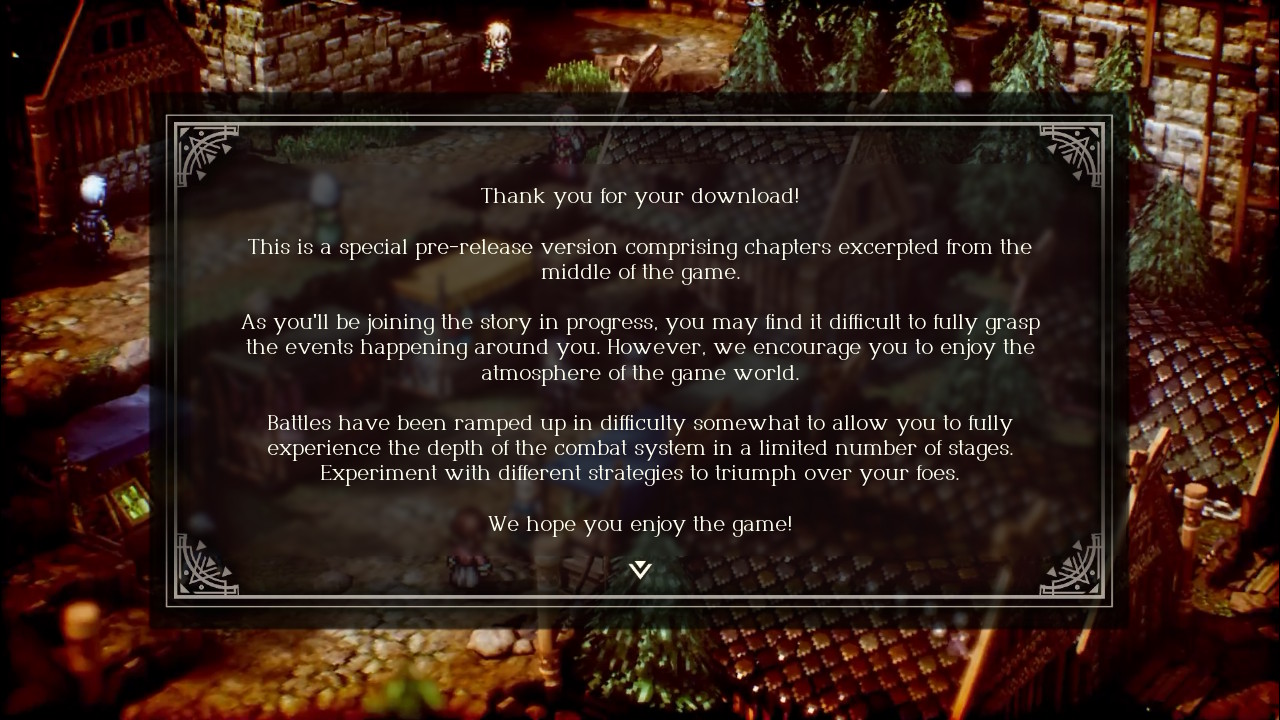
Though this title is a work in progress, players can access the demo on Nintendo Switch. The demo does not start at the beginning of the game; rather, it drops players somewhere in the middle during Chapter VI. This was done on purpose so that anyone jumping in would fully experience the combat system and not on easy mode.
If you aren't used to tactical RPGs, you may have some trouble at the start, but battles aren't timed. There's plenty of opportunities to play around with characters and settings while figuring out how to play. Though players are thrown into the thick of things, a few tutorial menus pop up to help with battles and explain what to do.
The bulk of the demo covers two battles, some exploration, an example of how the Scales of Conviction work, and a ton of cutscenes. Overall, it takes between 2-3 hours to complete.
Master your iPhone in minutes
iMore offers spot-on advice and guidance from our team of experts, with decades of Apple device experience to lean on. Learn more with iMore!
Project Triangle Strategy: Look, gameplay, and details
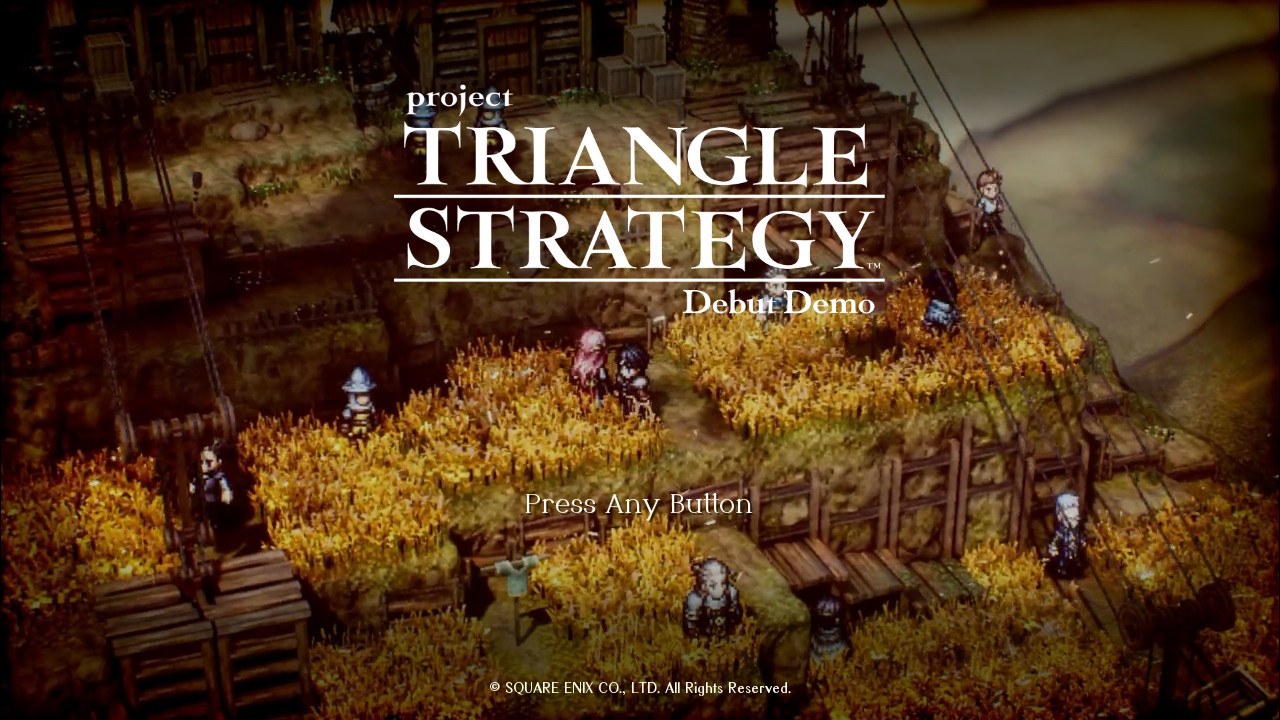
At first glance, Project Triangle Strategy looks a lot like another 2D tactical RPG I love, Final Fantasy Tactics. (This isn't surprising since Square Enix owns the Final Fantasy franchise as well.) The overall look also borrows from several titles, such as Octopath Traveler and Bravely Default.
The character designs are colorful, detailed, with obvious anime influences in the character profiles, which reminds me of Fire Emblem. Rather than exploring an overworld, players navigate a map with interest points. To further the plot, you can click on the red exclamation point or opt to check out the green exclamation point to recruit new characters or watch a cut scene.
The scenes are contained to the 2D depictions, but it works well here. It takes out the extra wait time since there is a lot of dialog to get through without stacking cut scenes on top. There are a ton of named characters — I encountered 25 different named characters, both NPC and playable characters — and each has their own motivations, skills, designs, and job classes. However, the choices you make during your playthrough can affect who shows up.
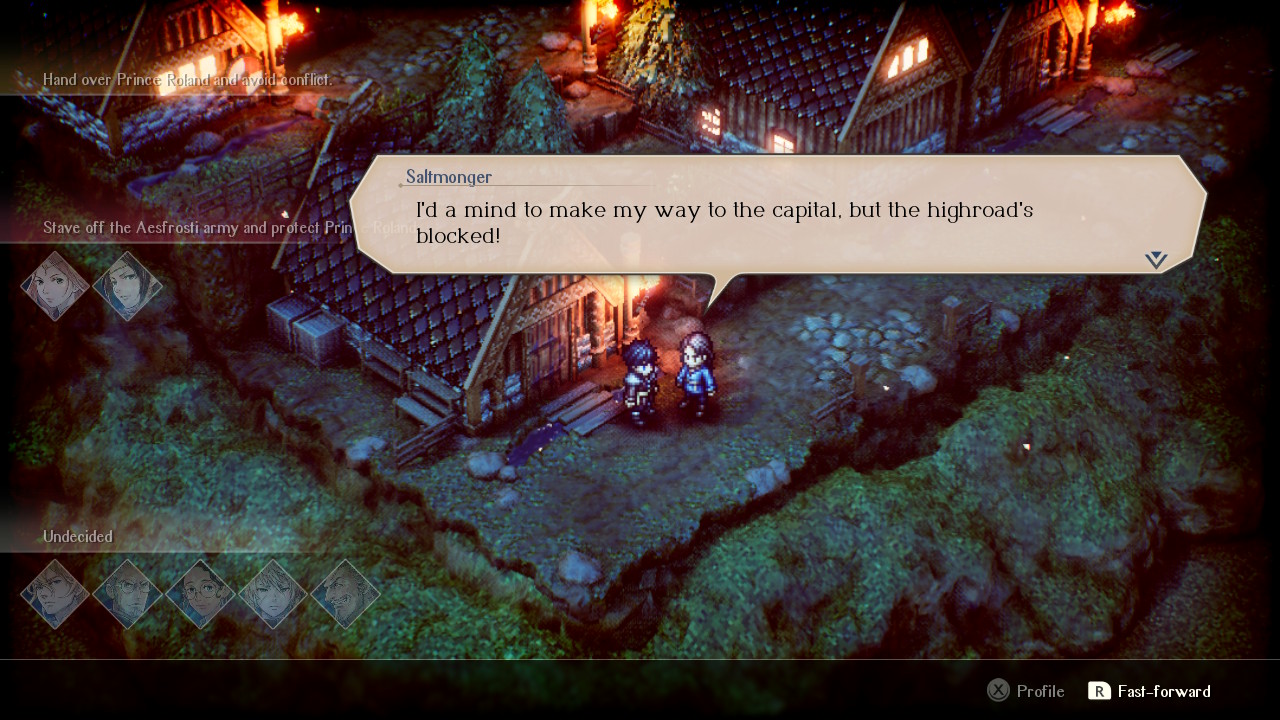
Whether it's because the cast is so large or the demo so limited, aside from the character classes, it can be difficult to tell the characters apart. Part of that issue is due to the one-note voice acting. While some of the voices are decent, they sound a bit stale and a little cringy at points. Still, overall, the look and feel of the game is unique. Though it borrows from plenty of games, it finds a way to make it look different enough to stand alone.
Game details
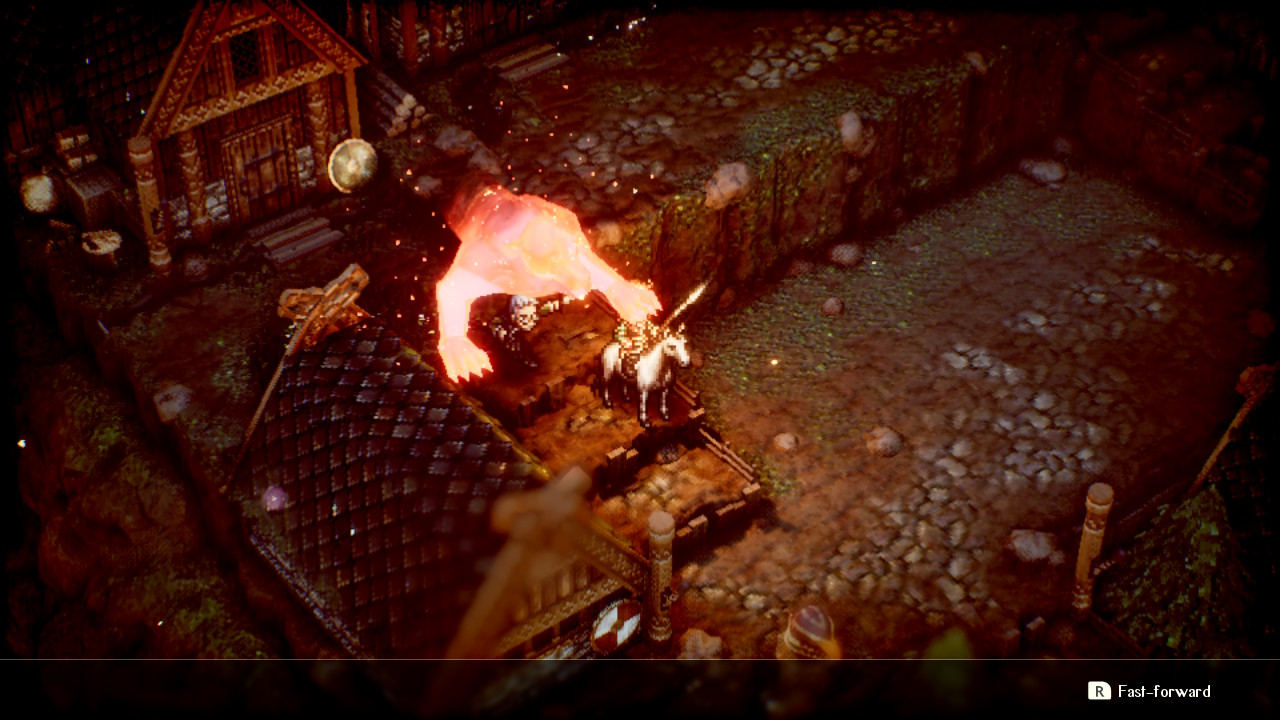
Beyond the look, there are few details that make this game stand out. For example, there are unique control options. You can hit a button to get a good look at whoever is speaking, which is great in a game with so many characters. You can also fast forward through the dialog if you don't care about political intrigue.
The game is broken down into phases: exploration, story, and battles. For exploration, players take control of Serenoa and can do a little exploring either in a town or by checking out non-story points on the map. This is pretty neat since most strategy RPGs focus on the battles alone. It's nice to be able to look around the towns, talk to individual players during scenes, and discover dialog options that can help you out.
If you're given an option to speak to a character, you have three different options as part of the Conviction mechanic. The choices are balanced between Utility, Morality, and Liberty, and these choices can influence parts of the game, such as battles, allies, and side missions. Don't let the "best" choice fool you either; sometimes, doing the right thing may result in a horrible consequence. Still, this new mechanic makes the game exciting and different from others in the genre.
Character Classes and menu options
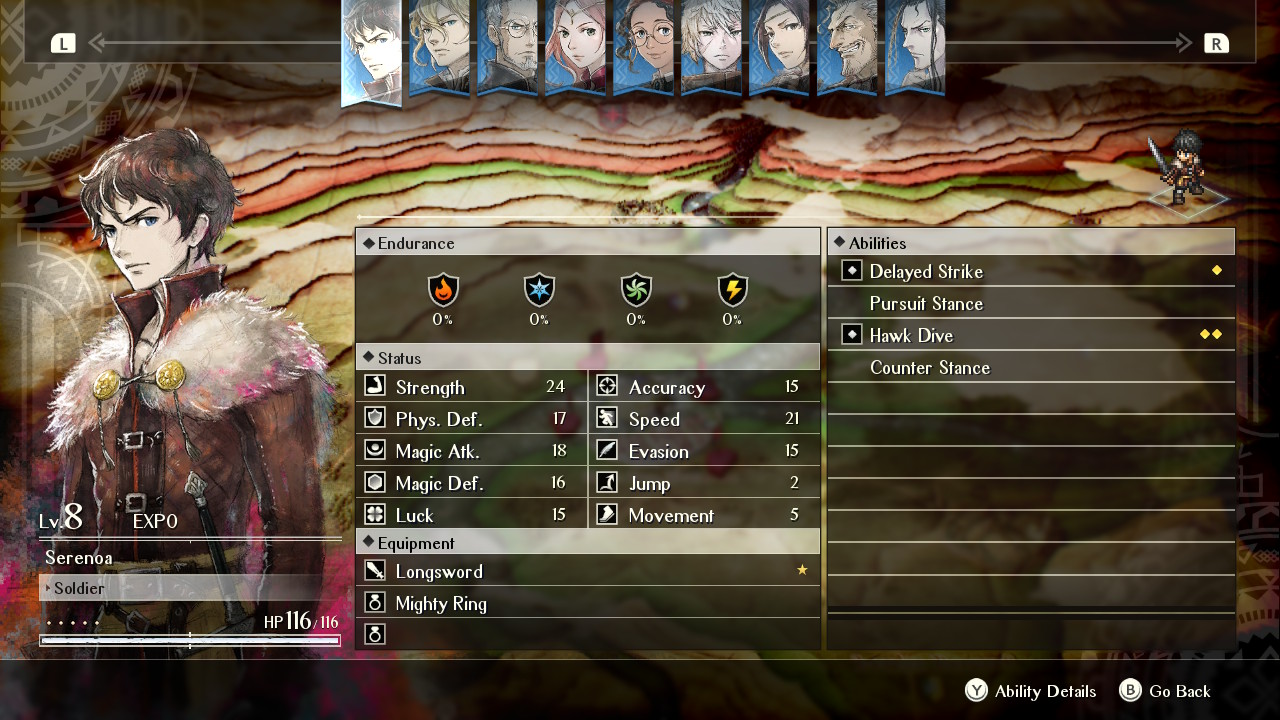
Like most strategy games, players are given various characters with different classes and abilities. There's nothing super unique here. You'll find the usual equipment, weapons, and stats like strength, luck, magic, and more. You can view each unit's card from the menu, and the stats are determined by class and level. All of these details seem run-of-the-mill, but they can change the course of a battle.
From the menu, you can access the Encampment, which allows you to prepare for battle. Here you can buy skills, items, weapons, or look for sidequests and useful information. The demo showed off skills and items, but you can't access the rest of the activities just yet.
One final detail is that the map doesn't let you wonder how strong you should be to take on a battle. It gives you a suggested level, so you can prepare yourself for what lies ahead. I can only hope the game offers ways to level up your characters if you don't quite fit the bill, or let you get obscenely powerful.
How do battles work?
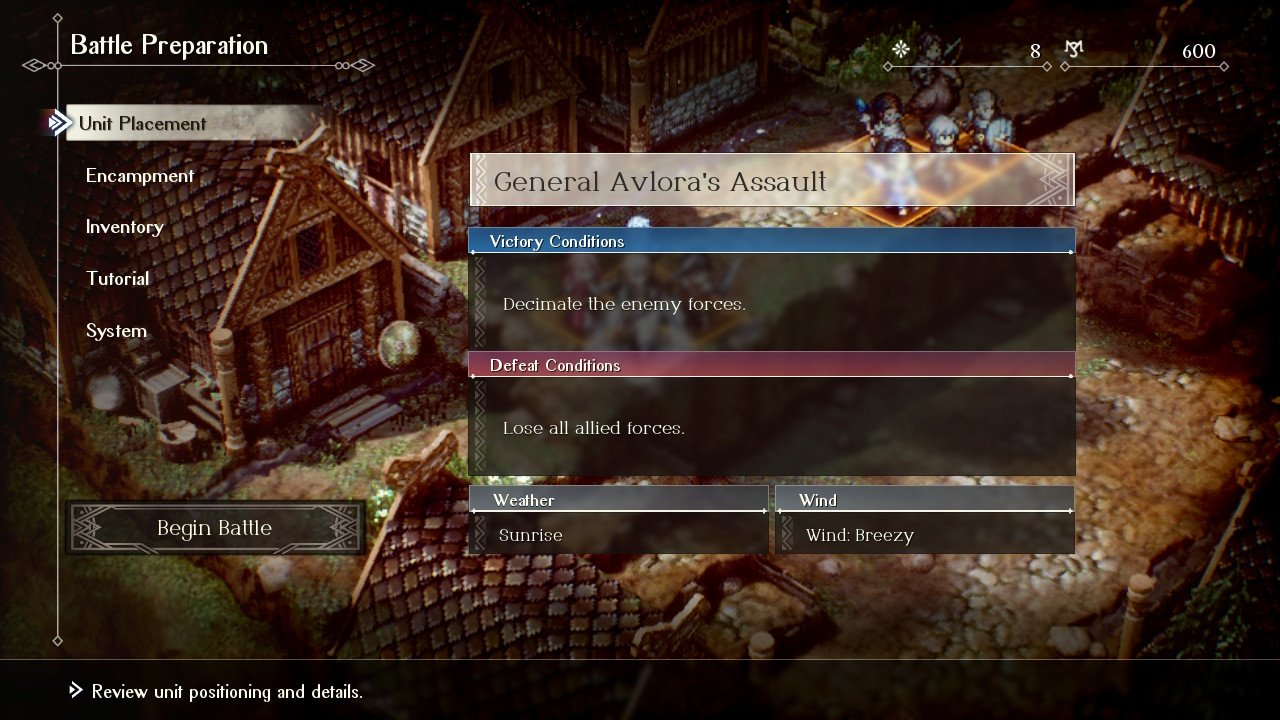
Battles in Project Triangle Strategy are just like a chess match. If you have ever played Final Fantasy Tactics, you'll feel right at home here. The key points to victory are position, initiative, and your choice of crew. You need to use your position on the terrain to gain an advantage and protect yourself. Back attacks can be your downfall, and if you allow a character to get surrounded, you will get double-teamed.
You have to keep an eye on the battle order, which can be hard with generic units, and make a note of your characters' and enemies' weaknesses. For each character, you have a movement and an action. You can also choose to skip everything and just wait, but you have to choose which direction you'll face at the end of each turn. After each action, you gain experience so you should continuously act rather than sit still.
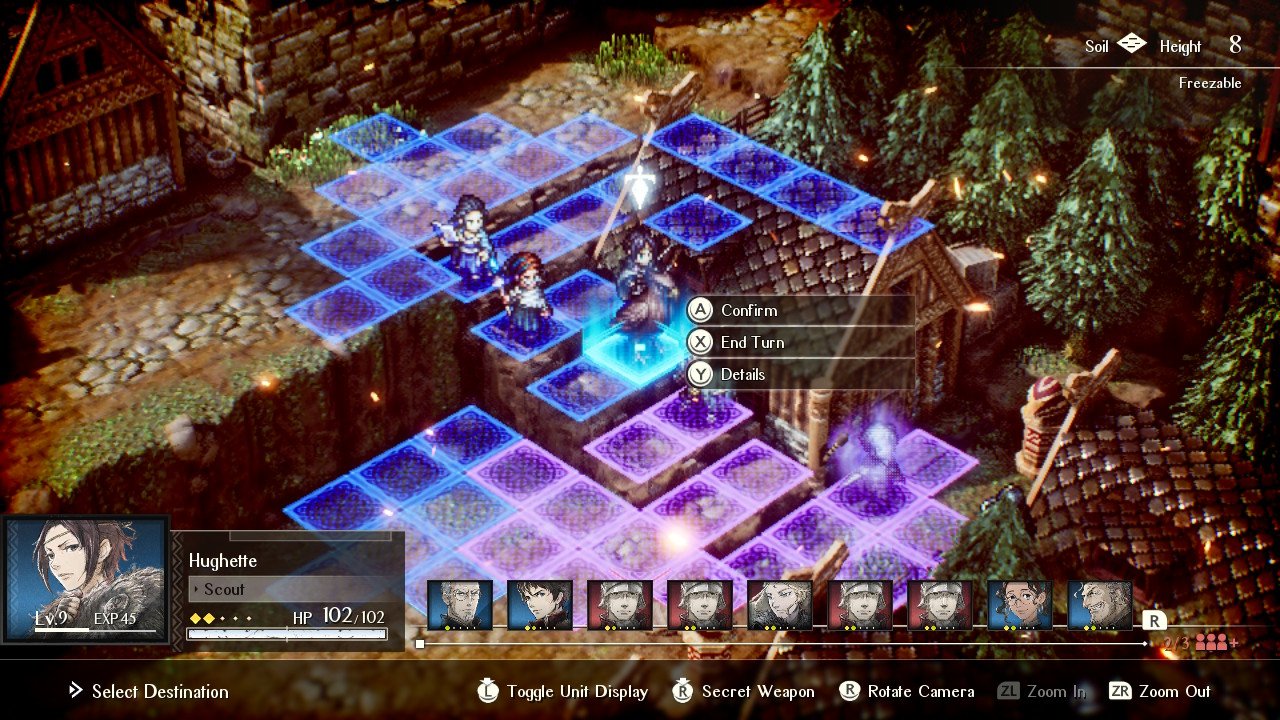
What's fun are the interactive elements in each scene. You may have to trigger a drawbridge or release a trap on your enemies. You can also use a particular character's strength to freeze enemies in place or knock them back into each other. Also, there are options called Quietuses that don't use a turn but must be used once they appear in a battle. Unfortunately, if you don't have the right position, you can lose fast.
The battles are pretty much the draw of a game like this, so making them fun is a must. Thankfully, there is a lot you can do on the battlefield here, from planning different strategies with your available units to using the terrain. I just wish I had even more of it.
Bottom line: How was the Project Triangle Strategy demo?
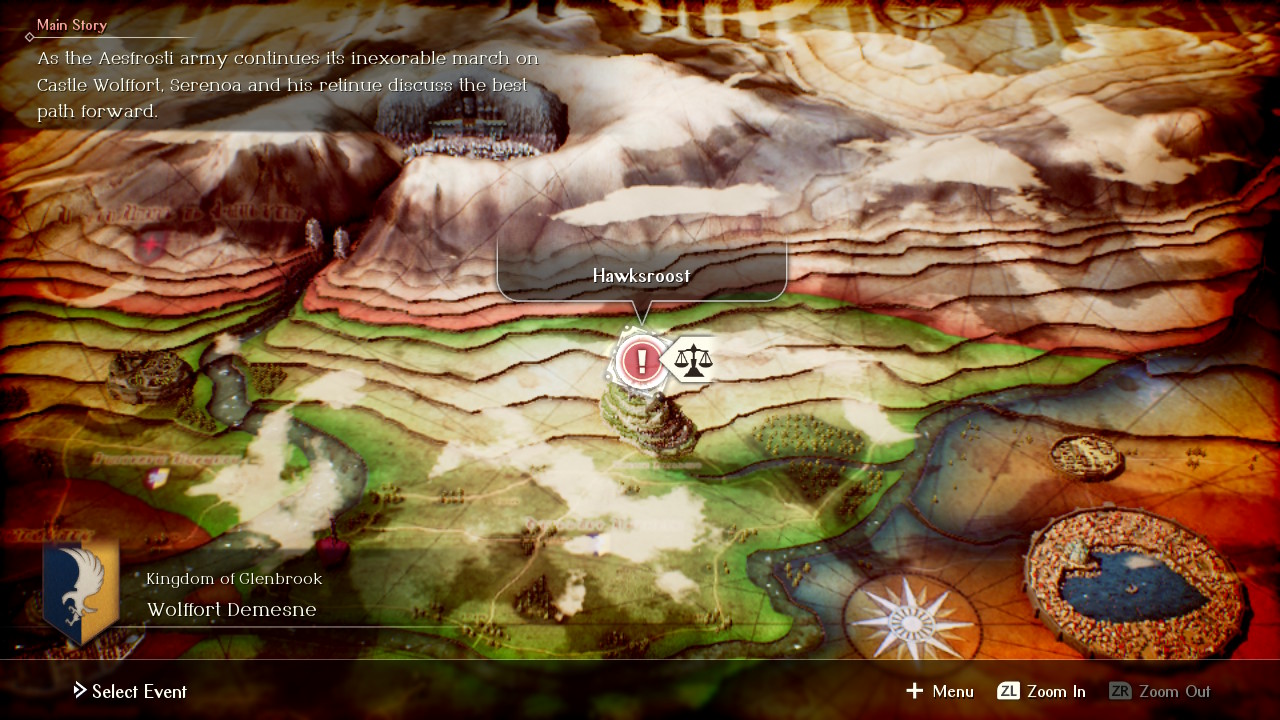
After a playthrough (or two), I can say that Project Triangle Strategy shows a lot of promise. While the story, voice acting, and characters leave a little to be desired, the new mechanics and interactive battles have me hooked. I love a good strategy game that reminds me of how much I love the genre, and this has the potential to be a great new series. The Scales of Conviction offer a welcome change, letting you build your own story in different ways, and the option to explore towns and build relationships with your troops is also a nice change of pace.
Overall, the battles were fun and challenging, the presentation was great, and I'm excited to see where the game takes us when the full version releases in 2022.
You can download a free demo on the Nintendo Switch eShop right now.
Sara is the Freelance Coordinator, writer, and editor at iMore. When not editing or writing away, she's glued to her Nintendo Switch, Xbox, or PS5, though she's a retro gamer at heart.
